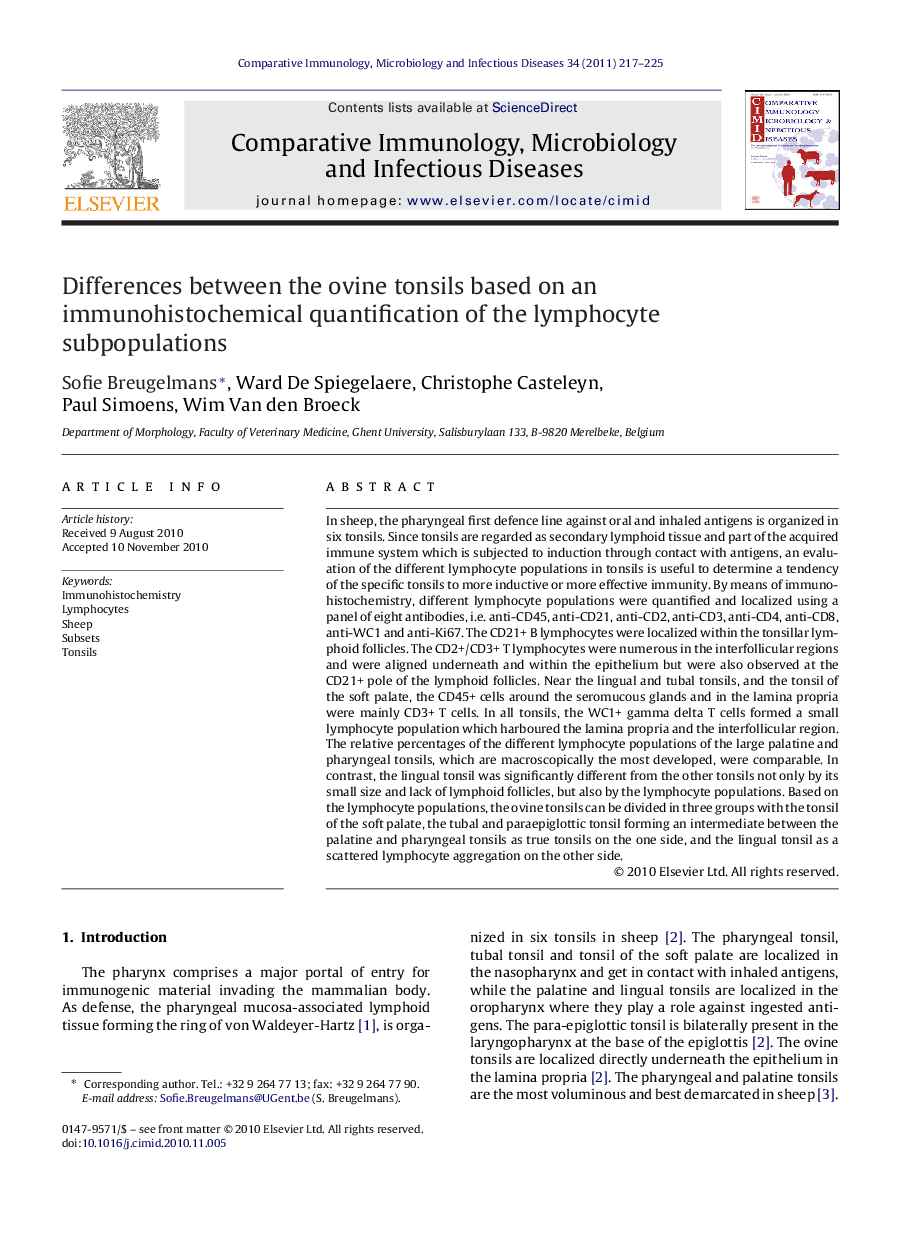| Article ID | Journal | Published Year | Pages | File Type |
|---|---|---|---|---|
| 2428446 | Comparative Immunology, Microbiology and Infectious Diseases | 2011 | 9 Pages |
In sheep, the pharyngeal first defence line against oral and inhaled antigens is organized in six tonsils. Since tonsils are regarded as secondary lymphoid tissue and part of the acquired immune system which is subjected to induction through contact with antigens, an evaluation of the different lymphocyte populations in tonsils is useful to determine a tendency of the specific tonsils to more inductive or more effective immunity. By means of immunohistochemistry, different lymphocyte populations were quantified and localized using a panel of eight antibodies, i.e. anti-CD45, anti-CD21, anti-CD2, anti-CD3, anti-CD4, anti-CD8, anti-WC1 and anti-Ki67. The CD21+ B lymphocytes were localized within the tonsillar lymphoid follicles. The CD2+/CD3+ T lymphocytes were numerous in the interfollicular regions and were aligned underneath and within the epithelium but were also observed at the CD21+ pole of the lymphoid follicles. Near the lingual and tubal tonsils, and the tonsil of the soft palate, the CD45+ cells around the seromucous glands and in the lamina propria were mainly CD3+ T cells. In all tonsils, the WC1+ gamma delta T cells formed a small lymphocyte population which harboured the lamina propria and the interfollicular region. The relative percentages of the different lymphocyte populations of the large palatine and pharyngeal tonsils, which are macroscopically the most developed, were comparable. In contrast, the lingual tonsil was significantly different from the other tonsils not only by its small size and lack of lymphoid follicles, but also by the lymphocyte populations. Based on the lymphocyte populations, the ovine tonsils can be divided in three groups with the tonsil of the soft palate, the tubal and paraepiglottic tonsil forming an intermediate between the palatine and pharyngeal tonsils as true tonsils on the one side, and the lingual tonsil as a scattered lymphocyte aggregation on the other side.
